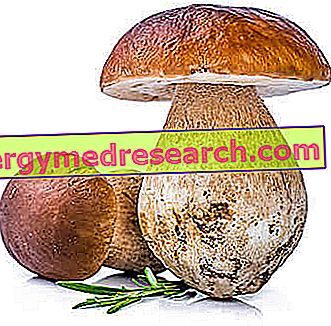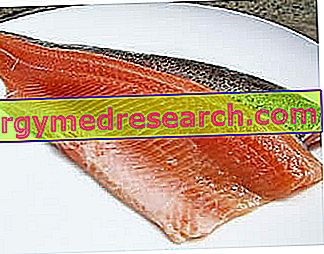What is the Borgotaro mushroom?
" Fungo di Borgotaro " is the commercial name - protected by the trademark Indicazione Geografica Tipica ( IGP ) - of porcini mushrooms collected in some areas of the Tuscan-Emilian Apennines.
The regulated area for the Borgotaro mushroom picking includes the municipalities:
- Toscani (Massa Carrara): Pontremoli and Zeri
- Emiliani (Parma): Borgo Val di Taro, Berceto, Albareto, Compiano, Tornolo and Bedonia.
Porcini mushroom

- B. edulis (common porcine)
- B. pinophilus (moro)
- B. aestivalis (summer boletus)
- B. aereus (black porcino).
Porcini mushrooms are basidiomycete mushrooms with tubules, symbiotic, edible and of great culinary value. They are fleshy, with a clear, thick stem and a brownish (light or dark) and lighter, slightly yellowish top.
Nutritional properties
Nutritional characteristics of the Borgotaro mushroom
Mushrooms do not belong to a specific group of foods, but it is common to treat them as if they were vegetables and vegetables (although in fact they are NOT vegetables).
Porcini have few calories, supplied mainly by amino acids and peptide compounds. Carbohydrates and lipids are not very relevant.
They contain prebiotic molecules, some of which are improperly classified as fibers, in interesting percentages.
Cholesterol is absent.
Interesting quantities of B1 (thiamine), B2 (riboflavin) and PP (niacin) are found among the vitamins; Vitamin D is very interesting.
As for minerals, the concentrations of iron (although not bioavailable), potassium and phosphorus are discrete.
Porcini lend themselves to most nutritional regimes. They do not contain lactose or gluten, but they can be food allergy.
They are admitted from vegetarian and vegan philosophies.
They are allowed in the kosher (Jewish), Muslim and Hindu diet.
Mushrooms have no contraindications for the clinical nutrition of overweight subjects and / or those suffering from metabolic disorders.
The medium portion (of fresh porcini) is about 200 g (50 kcal).
| Porcini Mushrooms, Fresh | ||
| Nutritional values per 100 g | ||
| Power | 26.0 kcal | |
| Total carbohydrates | 1.0 g | |
| Starch | - g | |
| Simple sugars | - g | |
| fibers | 2.5 g | |
| Grassi | 0.7 g | |
| Saturated | - g | |
| Monounsaturated | - g | |
| polyunsaturated | - g | |
| Cholesterol | 0.0 mg | |
| Protein | 3.9 g * | |
| water | 92.0 g | |
| Vitamins | ||
| Vitamin A equivalent | - μg | |
| Beta-carotene | - μg | |
| Lutein Zexanthin | - μg | |
| Vitamin A | - RAE | |
| Thiamine or B1 | 0.38 mg | |
| Riboflavin or B2 | 0.26 mg | |
| Niacin or PP or B3 | 4.0 mg | |
| Pantothenic acid or B5 | - mg | |
| Pyridoxine or B6 | 0.18 mg | |
| folate | 0.0 μg | |
| Choline | - mg | |
| Ascorbic acid or C | 3.0 mg | |
| Vitamin D | 120.0 IU | |
| Alpha-tocopherol or E | 0.12 mg | |
| Vit. K | - μg | |
| Minerals | ||
| Football | 22.0 mg | |
| Iron | 1.2 mg | |
| Magnesium | - mg | |
| Manganese | - mg | |
| Phosphorus | 142.0 mg | |
| Potassium | 235.0 mg | |
| Sodium | 52.0 mg | |
| Zinc | 0.10 mg | |
| Fluoride | - μg | |
* about 60% of the nitrogen is present as non-protein nitrogen.
Recipes
Gastronomic uses of the Borgotaro mushroom
With Borgotaro mushrooms you can prepare: appetizers, first courses, side dishes and main courses.
The Borgotaro mushroom is mainly sold fresh and dry. The fresh porcino has a more delicate taste than the dry one recovered with water; this depends above all on the maturation of different aromatic compounds, which develop during storage.
Only fresh, the Borgotaro mushroom can be eaten raw in salads (thinly cut); it is perhaps one of the few cases in which a side dish represents the most valuable recipe of a given ingredient. For all other applications you can choose the fresh one as well as the dry one.
The phase of soaking dried porcini mushrooms is a very important procedure; in fact it is absolutely necessary to conserve the residual water, rich in aromatic components, which will be carefully filtered (with a gauze, to retain impurities) and added to the food to be prepared (after any nuance of wine, never before).
- Appetizers based on mushrooms from Borgotaro are: vol-au-vent of porcini mushrooms, sautéed mushrooms with olives, bruschetta with porcini mushrooms, quiche with porcini mushrooms, fresh and porcini cheeses, fondue of seasoned and porcini mushrooms, porcini mushrooms in oil
- First courses of Borgotaro mushrooms are: tagliolini with porcini mushrooms, ravioli stuffed with porcini mushrooms and ricotta, velvety with mushrooms, lasagna with porcini mushrooms, risotto with porcini mushrooms, pancakes with porcini mushrooms, polenta with ragù sauce and porcini mushrooms
- Second courses based on Borgotaro mushrooms are: roast pork with porcini mushrooms, braised wild boar with porcini mushrooms, veal escalopes with porcini mushrooms, fricassee hare with porcini mushrooms, prawns shaded with grappa with porcini mushrooms, baked sea bass with porcini mushrooms, guinea-fowl stuffed with porcini mushrooms, snails and porcini mushrooms
- Borgotaro mushroom side dishes: fresh porcini salad / carpaccio, porcini mushrooms sautéed with parsley, baked stuffed porcini mushrooms, porcini mushrooms au gratin, fried porcini mushrooms, grilled porcini mushrooms / plate.
Production
Production of the Borgotaro mushroom
A good production of porcini mushrooms requires at least 3 factors:
- Presence of the underground mycelium, which interacts with some specific plants (oaks, chestnuts, beeches and some firs)
- Right climate, understood as temperature, humidity, precipitation
- Undergrowth factors influenced by the overlying vegetable scrub.
The production of Borgotaro mushrooms is based on the collection of wild products; this system is largely influenced by silviculture, that is, by the form of government and the type of forest treatment.
Note : silviculture or forestry means that part of the forest sciences related to the planting, conservation and utilization of forests.
Porcini, being symbiotic mushrooms, cannot be cultivated in a completely controlled manner (as instead happens with field mushrooms, pioppini and pleurotus).
Since this is the only variable on which to intervene, in the production of Borgotaro mushrooms, great importance is given to the maintenance of the symbiotic forest area. It seems that the most profitable form of government for the production of Borgotaro mushrooms is coppice, while the high forest system does not offer good results. Moreover, they produce better and more abundantly the stains subjected to periodic interventions, compared to the old abandoned woods.
Statement
Controlled harvest of Borgotaro mushrooms
The Borgotaro mushroom picking is regulated by a series of local indications, different according to the region and more precisely to the area.
These rules establish the collection days, the withdrawal volumes (different between residents and non-residents), the type of transport (to optimize the spread of spores), the minimum size of the mushrooms and the maximum number of cards to be issued.



